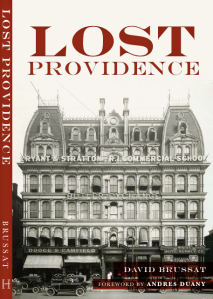The bridge above, in Ljubljana, Slovenia – I am assuming it is a bridge and not a dam – is by Slovenian architect Joze Plecnik (1872-1957), whose architectural style evolved, I gather, toward a sort of edgy Art Nouveau. He was born when Slovenia was part of Austro-Hungary, and died well before its peaceful but largely unnoticed, in the West, separation from Jugoslavia. Plecnik spent part of his life working in Prague, especially adding many bits and parts to Prague Castle. Plecnik was caught up somewhat, but clearly not disastrously so, in his field’s growing resistance to traditional form. This bridge proves that Plecnik had a great sense of humor.
Plecnik is, I believe, one of the architects Andres Duany hopes, in his upcoming book, or treatise, called Heterodoxia Architectonica, to reclaim for classicism after they have spent decades in absurd modernist re-education camps. (Louis Sullivan is another such prisoner of modernist architectural revisionism.)
I have looked without success for confirmation of news that a longstanding exhibit of Plecnik’s work, with a host of fabulous wooden models, at Ljubljana’s city museum was closed because current new Slovenian architecture being promoted by the authorities (often, says my source, quite good) looks tepid next to Plecnik.
In short, I am fishing for evidence of modernism’s totalitarian bent. The facts may not bear out my meme, but I lack facts. Meanwhile, below are a couple more images from Ljubljana, which I gather is considered one of the next undiscovered tourist destinations.







Hi David,
Do you recommend any particular books on Plencik? Krecic’s Complete Works?
Thanks!
LikeLike
I have only one book about Plecnik, Spice, and I have not read it through, and I would not venture to assess it except to say its illustrations are very good. It is called “Joze Plecnik: Vienna, Prague, Ljubljana” (in English, by Hrausky, Kozelj and Prelovsek, 2007, Cankarjeva zalozba). A couple of commenters below have mentioned books on Plecnik.
Plecnik was a great architect in my opinion, and he proves that classicism can be innovative without jettisoning what makes classical architecture great and lovable.
LikeLike
Thanks!
I agree. I’ve just come across him very recently but I see a budding architectural romance in my future.
LikeLike
The Plecnik Musem/HOuse has published a book by Noah Charney — Plecnik, Eternal Architect, which I haven’t read yet. Joze Plecnik, Architect edited by Burckhardt, Eveno et al was published by the Centre Pompidou in 89 and has a many interesting essays on Plecnik. Charney was a student of Krecik, whose book is useful, but the English version is shorter than the Slovenian edition.
LikeLike
Thanks for the tip! I will check it out. I was able to get a copy of Damjan Prelovsek’s book for a fair price. I will report back.
LikeLike
Pingback: Recapture Joze Plecnik! | Architecture Here and There
Pingback: Plecnik revisited | Architecture Here and There
It is indeed a weir, part of Plecnik’s extensive intervention into the river system which included river-banks, quays, bridges and landscape architecture. I don’t think humor or irony was part of his repertoire. Lubljana is well worth a visit because of the extraordinary presence of Plecnik’s influence: he did squares, avenues, bridges, a remarkable market building, an incredible cemetery, a great university library, churches, office buildings, private houses, a terrific flat-iron building, and walks punctuated with archaeological remnants and pyramids. He was an outlier, and an original architect and urbanismt who deserves to be better known, which is why I am working on a book of photographs that I hope will do justice to his work. As to the modernist-totalitarian link, I would think that this would only pertain to Italy– some of the Fascist architecture in the towns outside the Roman marshes is terrific Bur Hitler loved grandiose, pallid classicism, and Stalin was into Weddingg Cake. The Bauhaus didn’t survive the Nazis.
LikeLike
I have to notice the first picture in tour post is not a bridge but a water-gauge, water regulation has been quiet an issue in Ljubljana since centuries. I wouldn’t go into theory about his work but would like to mention his great talent for reinterpreting folk art and national heritage. Like decorating a church with simple ceramic plates made by local artisans.Or have a look at My Botanical Garden , search for Plecnik-I’ve written about beehive he constructed.Wish you a nice day! Tamara
LikeLike